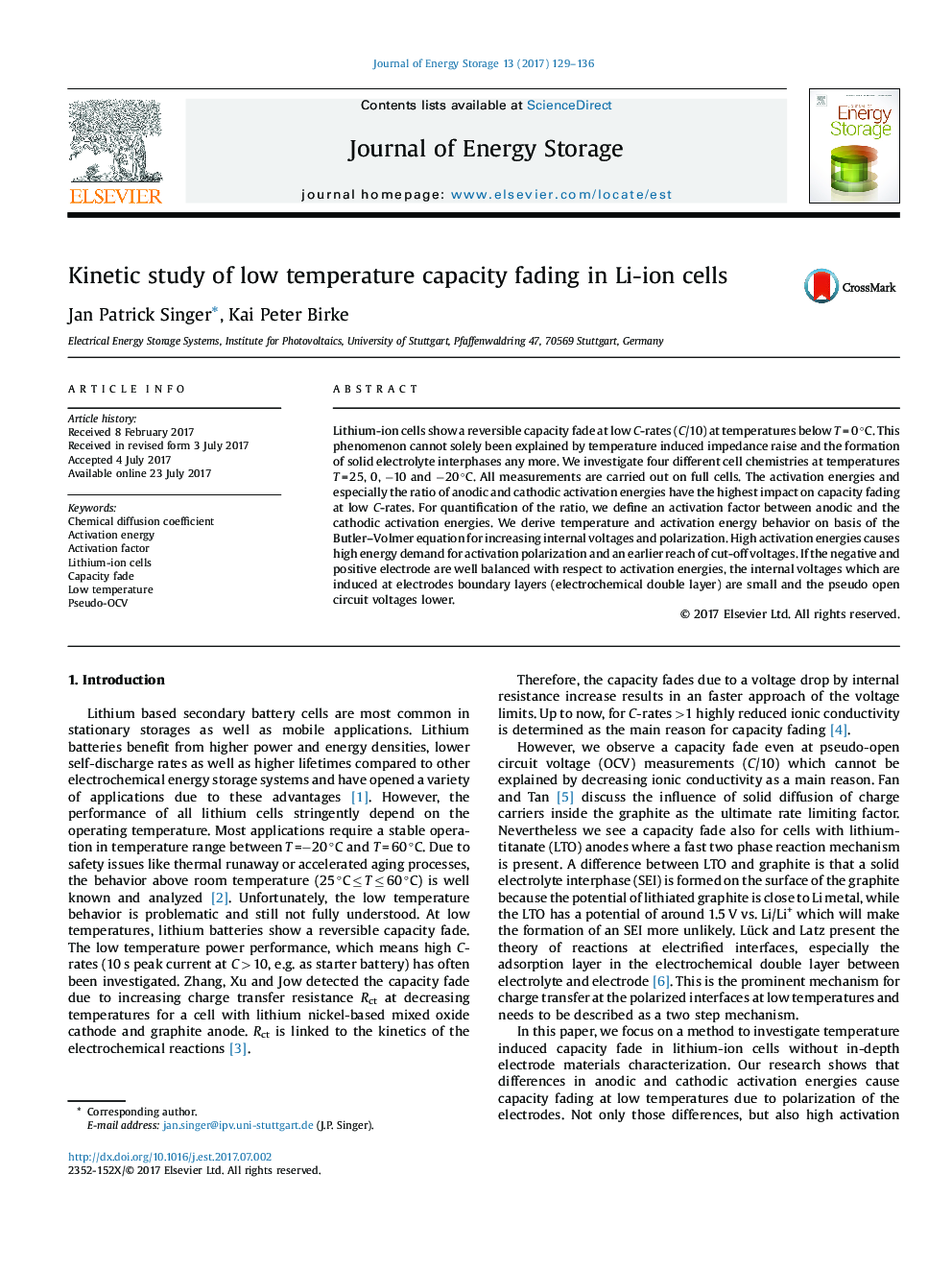| Article ID | Journal | Published Year | Pages | File Type |
|---|---|---|---|---|
| 5127326 | Journal of Energy Storage | 2017 | 8 Pages |
â¢Kinetic study on four different cell chemistries without detailed materials characterization.â¢Polarization effects in Li-ion cells at low temperatures.â¢Influence of electrodes activation energies on low temperature performance.â¢Good performance at T < 0 °C requires low and similar electrodes activation energies.
Lithium-ion cells show a reversible capacity fade at low C-rates (C/10) at temperatures below T = 0 °C. This phenomenon cannot solely been explained by temperature induced impedance raise and the formation of solid electrolyte interphases any more. We investigate four different cell chemistries at temperatures T = 25, 0, â10 and â20 °C. All measurements are carried out on full cells. The activation energies and especially the ratio of anodic and cathodic activation energies have the highest impact on capacity fading at low C-rates. For quantification of the ratio, we define an activation factor between anodic and the cathodic activation energies. We derive temperature and activation energy behavior on basis of the Butler-Volmer equation for increasing internal voltages and polarization. High activation energies causes high energy demand for activation polarization and an earlier reach of cut-off voltages. If the negative and positive electrode are well balanced with respect to activation energies, the internal voltages which are induced at electrodes boundary layers (electrochemical double layer) are small and the pseudo open circuit voltages lower.
